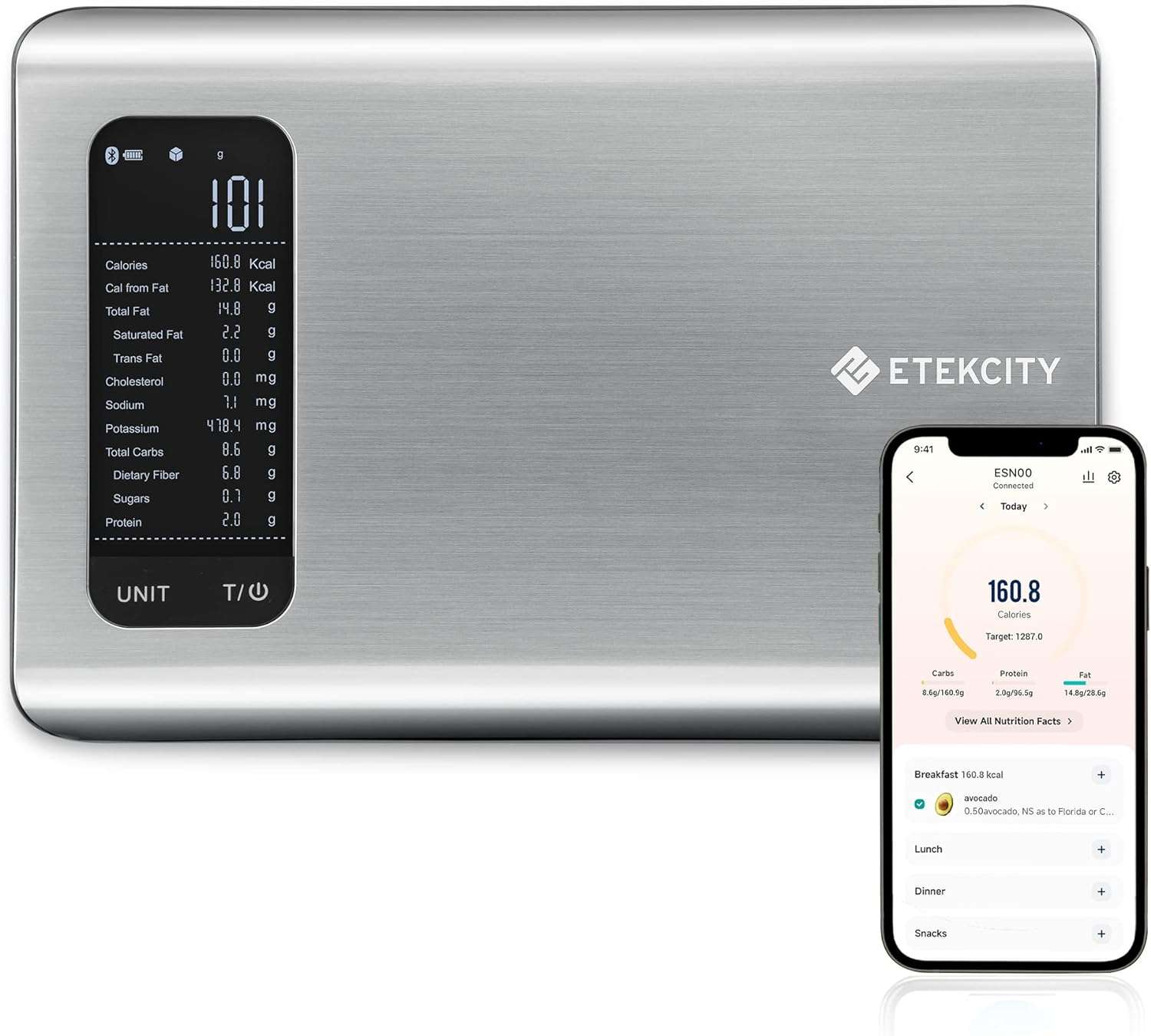Best TDEE Calculator To Lose Weight
By Chantel Ilawole | Updated April 25, 2024
The Total Daily Energy Expenditure (TDEE) calculator is an invaluable tool for anyone looking to gain deeper insights into their daily calorie needs. By factoring in your age, gender, weight, height, and level of physical activity, an accurate TDEE calculator provides a precise estimate of the number of calories you burn in a day..
TDEE Calculator
| Measurement | Value (calories/day) |
|---|---|
| Basal Metabolic Rate (BMR) | |
| Sedentary (office job) | |
| Light Exercise (1-3 days/week) | |
| Moderate Exercise (3-5 days/week) | |
| Heavy Exercise (6-7 days/week) | |
| Athlete (twice/day) |
Understanding TDEE and Its Role in Weight Loss
TDEE stands for total daily energy expenditure. Your TDEE is the estimated amount of energy your body uses in a typical day based on your current activity level, from sleeping to working out.
It’s like your body’s daily fuel needs. If you know your TDEE, you can plan how to eat and move to change your weight.
Losing weight means eating fewer calories than your TDEE. When you do this, your body starts using stored fat for energy. But it’s important not to cut too many calories. Eating much less than what TDEE suggests may harm your health and make it hard to keep the weight off later.
TDEE comprises four critical components: Basal Metabolic Rate (BMR), Thermic Effect of Food (TEF), Exercise Activity Thermogenesis (EAT), and Non-Exercise Activity Thermogenesis (NEAT).
- Basal metabolic rate (BMR): this is a critical component of your total daily energy expenditure, which could be more accurately assessed with a specialized BMR and expenditure calculator. BMR, the calories your body expends for vital functions like breathing and maintaining brain function, represents approximately 70% of your TDEE.
- Thermic effect of food (TEF): TEF, the energy used to digest food, accounts for about 10% and varies with macronutrient intake, with proteins having a higher TEF compared to carbs and fats.
- Exercise activity thermogenesis (EAT): EAT, the calories burned through formal exercise, contributes around 5% to TDEE, highlighting the importance of incorporating strength training, HIIT, and cardiovascular exercises into your regimen, aligning with using a macro calculator to fine-tune nutritional intake.
- Non-exercise activity thermogenesis (NEAT): NEAT includes calories burned from non-exercise activities, making up about 15% of TDEE, underscoring the value of staying active throughout the day with activities like walking, gardening, and even standing.
Importance of Calculating TDEE for Weight Management
Knowing your TDEE helps you plan how many calories to eat each day. It sets the stage for weight management, whether you want to lose, gain, or keep your current weight. Using TDEE as a guide means you can adjust what you eat and your physical activity to hit your personal health and fitness goals.
For those looking to shed pounds, understanding TDEE prevents undereating which can harm the body. It also avoids overeating that leads to unwanted weight gain.
With accurate TDEE knowledge and the help of an accurate TDEE calculator, everyone from beginners to experienced athletes can make smarter food choices and workout plans, ultimately optimizing their daily energy expenditure.
This ensures they fuel their bodies right without guessing how much energy they need each day.
How to Calculate TDEE
Calculating your Total Daily Energy Expenditure (TDEE) is a pivotal step toward mastering your fitness and dietary goals.
This comprehensive process begins by determining your Basal Metabolic Rate (BMR), a measure of the calories your body requires for essential functions like breathing, circulating blood, and cellular growth.
BMR estimation hinges on several physical characteristics, including age, gender, height, and weight, utilizing established equations such as the Mifflin St-Jeor Equation, Harris-Benedict equation, and for those with a leaner physique, the Katch-McArdle Formula, which accounts for metabolic activity differences stemming from lean body mass versus body fat.
Following BMR calculation, the figure is adjusted by an activity level factor to accurately reflect your daily energy expenditure.
This factor varies based on your lifestyle and exercise routine, ranging from sedentary to highly active.
Incorporating strength training, HIIT, or any consistent physical activity significantly influences this aspect of the TDEE calculation, emphasizing the role of Exercise Activity Thermogenesis (EAT) and Non-Exercise Activity Thermogenesis (NEAT) in your overall energy expenditure.
While the Thermic Effect of Food (TEF) — the calories expended during food digestion — plays a lesser role compared to BMR and activity levels, it’s nonetheless an integral part of the TDEE equation.
Foods high in protein, for instance, have a higher TEF, thus consuming a protein-rich diet can slightly boost your TDEE, aiding in more effective weight management and muscle gain strategies.
Understanding and applying these calculations allow for a tailored approach to nutrition and fitness, enabling precise dietary adjustments and workout plans.
By focusing on these key components — BMR, activity levels, EAT, NEAT, and TEF — individuals can create a highly personalized blueprint that aligns with their health objectives, whether it’s losing fat, building muscle, or maintaining a healthy weight.
How to Use the TDEE Calculator for Weight Loss
Losing weight in a healthy and sustainable way often involves understanding and managing your daily energy expenditure.
The TDEE calculator is an essential tool that can help you achieve your weight loss goals by providing insights into how many calories you burn in a day.
Here’s a step-by-step guide on how to use our calculator for weight loss:
- Choose the unit system you are most comfortable with. You can select either the metric system (kilograms and centimeters) or the imperial system (pounds and inches). This will determine how you input your weight and height measurements.
- Input your age, gender, height, and weight in the fields provided. These factors significantly affect your basal metabolic rate (BMR), which is part of your total daily energy expenditure. Knowing your body fat percentage can provide a more accurate BMR calculation since it considers lean body mass, but it’s not necessary to proceed.
- Click the “Calculate TDEE” button to compute your total daily energy expenditure based on the inputs provided. The calculation will initially assume a sedentary activity level.
- Evaluate your daily activity level. Consider how much movement you engage in daily and select an appropriate activity level from the following:
- Sedentary (office job)
- Light exercise (1-3 days per week)
- Moderate exercise (3-5 days per week)
- Heavy exercise (6-7 days per week)
- Athlete (twice per day)
- The calculator will adjust your TDEE according to the activity level you think most accurately reflects your lifestyle.
- Analyze the Result: Review the calculated TDEE presented in the results message and table. This number represents the total number of calories you burn per day at your current activity level.
To lose weight, you need to create a calorie deficit. A safe and sustainable deficit is typically around 500 to 1,000 calories less than your TDEE per day, leading to a weight loss of about 1 to 2 pounds per week. - Make Informed Decisions: Plan your diet based on the calorie deficit. Adjust your daily calorie intake so that it is below your TDEE but still sufficient to keep you energized and nourished.
- Incorporate exercise as a strategy not only to increase your calorie deficit but also to maintain muscle mass and overall health.
- Eat fewer calories than that number to create a calorie deficit.
- Keep track of your progress. Weigh yourself regularly (e.g., once a week) at the same time of day, under the same conditions, to monitor your weight loss progress.
- Adjust your calorie intake or activity level as necessary if you are not seeing the desired results or if you experience changes in your lifestyle or health that affect your TDEE.
- Seek advice from a nutritionist or a doctor if you need personalized guidance or if you have any health conditions that might affect your diet or exercise routine.
Applying TDEE Results to Your Fitness Goals
Know your TDEE to set smart fitness goals. Eat less than this number if you want to lose weight. Consuming 20-25% fewer calories than your TDEE for safe, gradual weight loss is a strategy that employs an expenditure calculator to ensure you’re eating just the right amount.
For muscle growth, eat more calories but keep it healthy. Choose foods high in protein and do strength exercises.
Use your TDEE results to track progress. Adjust your diet and workouts as needed. If you’re not losing fat or gaining muscle, change how many calories you eat or how much you exercise.
Keep checking your stats with the calculator for the best results.
Common FAQs about TDEE and Weight Loss
Navigating through the complexities of weight loss, many individuals encounter questions about TDEE and how it impacts their fitness journey. Our section on common FAQs demystifies Total Daily Energy Expenditure and its significant role in shedding pounds efficiently.
Difference between TDEE and BMR
TDEE stands for Total Daily Energy Expenditure. It counts all the calories you burn in a day, including those from digesting food and moving around. BMR, or Basal Metabolic Rate, is different.
It’s the number of calories your body needs just to stay alive when you’re not doing anything at all — like if you were resting all day. Imagine TDEE as your total energy bill for everything you do, while BMR is like the minimum payment needed to keep the power on.
Your TDEE includes your BMR plus extra calories burned from walking, running or even fidgeting. The Thermic Effect of Food also adds to TDEE; that’s how many calories your body uses just to break down what you eat.
So knowing both these numbers can help plan how much food and exercise you need each day.
Next up: How can we boost our daily TDEE?
How to increase daily TDEE
Understanding your TDEE is one thing; boosting it is another strategy for weight management. To maintain a healthy balance and manage your daily total energy expenditure, get moving and stay active, and always consider recalculating your TDEE after significant changes in your activity level or weight.
Structured exercise, such as lifting weights, can build muscle, which burns more calories even when resting.
Add more non-exercise activities to your day as well, like walking or taking the stairs.
Eat plenty of protein to support muscle growth which ups your TDEE over time. Swap a sedentary lifestyle for a moderately active one with regular exercise routines. These changes help increase the calories you burn each day, making weight loss easier to achieve and maintain.
Using TDEE for weight loss
Once you’ve found ways to boost your daily TDEE, the next step is applying this knowledge to shed unwanted pounds. To lose weight effectively, create a caloric deficit by consuming fewer calories than your calculated TDEE.
This means that if your TDEE is 2500 calories per day, eating less than that will prompt your body to use stored fat for energy. Track what you eat and aim for a moderate deficit; too large can be unhealthy and unsustainable.
Adapt your diet plan based on the results from the TDEE calculator. Choose foods high in nutrients but lower in calories to ensure you meet your body’s needs without overeating. Combine this approach with consistent exercise as it helps burn extra calories leading to more effective weight loss while maintaining muscle mass.
Remember, losing weight takes time and patience; using TDEE calculations guides you toward a balanced method that supports long-term success.
FAQs
1. What is TDEE, and why is it important?
TDEE stands for Total Daily Energy Expenditure, which represents the total number of calories your body burns in a day. It is crucial for managing your weight, as it helps you understand how many calories you need to maintain, lose, or gain weight.
2. How can I calculate my TDEE?
You can calculate your TDEE using a TDEE calculator. This tool takes into account factors such as your age, weight, height, activity level, and goals to estimate the number of calories you burn each day.
3. Why should I use a TDEE calculator instead of a regular calorie calculator?
A TDEE calculator gives you a more accurate estimate of the calories your body burns by considering your total daily energy expenditure, including your activity level and daily activities. This helps you tailor your diet and fitness routine more effectively.
4. How can knowing my TDEE help with weight loss?
Understanding your TDEE allows you to create a calorie deficit by consuming fewer calories than you burn. This is essential for weight loss, as it helps you track your energy intake and make adjustments to achieve your desired weight goals.
5. What is the best TDEE calculator to use?
The best calculator is one that considers various factors such as age, weight, height, activity level, and fitness goals to provide an accurate estimate of your total daily energy expenditure. Look for a reliable tool that offers comprehensive calculations.
6. Can TDEE be used for purposes other than weight loss?
Yes, TDEE can also be used to maintain your current weight or even gain weight. By knowing your TDEE, you can adjust your calorie intake based on your goals, whether it’s weight loss, maintenance, or muscle gain.













